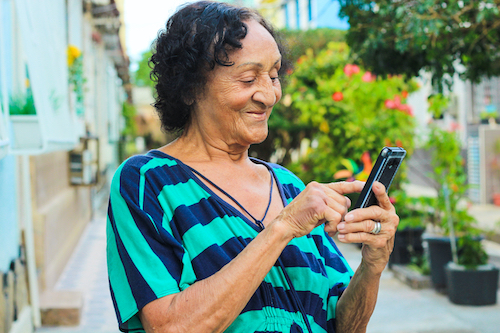What to do when in-person outreach and assistance is limited.
Last week we shared our tips for how to stay on your 2020 Census mission amidst the rapidly changing COVID-19 pandemic.
Since that time, we have heard inspiring stories from national, regional, statewide, and local nonprofits and governments about their outreach challenges and successes during this time.
Here are some of our learnings from our government and nonprofit partners on how to transition to digital outreach.
1. Meet Your Constituents Where They Are
In our focus groups and pilots with more than 400 Latinx users where we enabled them to ask census questions by SMS to a chatbot, 95% knew how to proceed and 87% self-reported that the chatbot successfully answered their census questions.
Digital outreach solutions should exist through the channels and media that your communities use and trust the most. These include channels like SMS, WhatsApp, Facebook Messenger, Instagram, TikTok, or others, many of which are experiencing heightened engagement as people seek to connect with each other while isolated at home.
With all this said, it’s important to remember that quality will always be more important than quantity. If you don’t have visual design resources, then Instagram might not be the right place; if your community exclusively chats on Facebook Messenger, you don’t also need to be on WhatsApp. Spending more time engaging with folks on the identified platform(s) will be more effective.
2. Leverage a Trusted Messenger Intermediary Organization
Many local nonprofits lack the financial, staffing, and technical resources to launch or pivot into digital outreach campaigns. Collaboration among local, regional, and state organizations or governments under a single entity can be a cost-effective way of joining forces to provide outreach at scale while reducing the effects of the canceled services that smaller organizations and governments may be experiencing during this time. Examples of these partnerships at work include many of our partners, such as United Way Bay Area, which oversees state Census funding allocation and reporting in the San Francisco Bay Area, as well as the Washington Census Alliance, a nonprofit umbrella organization supporting funding and outreach to over 40 nonprofits across the state of Washington, and the Leadership Conference on Civil and Human Rights.
3. Coordinate Digital Communications
With an increase in digital outreach, it is imperative that nonprofits and governments engaging with constituents coordinate their messaging content and, especially, their frequency. Local organizations and partners pivoting towards digital outreach campaigns should collaborate on their outreach campaigns to ensure that their constituents aren’t being bombarded with phone bank calls, texts, emails, or dis-engaged from calls to action.
United Way Bay Area, for instance, is coordinating a mass texting campaign to support nonprofits serving millions of people across 7 counties. Similarly, the WA Census Alliance is coordinating mass texting for over 40 nonprofits across the State of Washington.
An effective intermediary may have the staff with time and responsibility to coordinate among their member groups. Using our platform, organizations like our partners listed above can aggregate the contact lists and send out messages via mass texting. This ensures that lists are not duplicated and recipients do not get overwhelmed.
Do you have a good Census intermediary? Consider working through them to streamline resources for your community through a concentrated effort rather than every organization trying separately to reach the same audience.
4.Look for Digital Tools in Your Community’s Languages
Your volunteers may need digital tools in their language. In our experience, up to 40% of our users are using the non-English version of our census tools in some areas.
Choose digital tools that are available in the languages your community speaks and in which your nonprofit staff volunteers can use them. Similarly, look for tools with video trainings in the languages your community speaks. You can easily disseminate these videos, reduce staff time and resources across multiple organizations or networks, and increase direct outreach to your communities.
Furthermore, many nonprofits do not have the resources to train volunteers unfamiliar with or uncomfortable using outreach technology. Look for tools that provide training and marketing support to this user base, such as editable marketing templates. Easily editable yet effective marketing templates saved in accessible and common platforms such as Microsoft Word, which most people have access to, are especially important.
5. Use Digital Tools that Protect Your Community’s Data Security and Privacy
Ensure your community’s data security and privacy. Choose digital tools that can anonymize the contact data.
In our platform, the software translates a contact phone number to a unique ID. And then it “hashes” the phone number so that it’s not visible to anyone. This means that those numbers cannot be unhashed, which may limit an organization’s ability to export the numbers once the campaign is complete, but keeps the data secure.
Here are some other cybersecurity best practices for digital organizing efforts from the Leadership Conference on Civil and Human Rights.
The last few weeks have been trying times for nonprofits and governments supporting vulnerable communities across the country. Your services and advocacy do not have to stop with this virus — there is time to pivot your strategies. Digital tools can help you continue to perform outreach, and bring vital services and support to local communities who now, more than ever, will need them.

